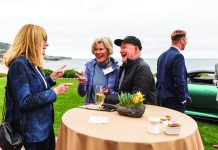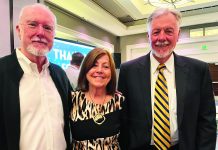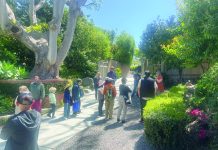The Art Exhibit

My daughter, Gabby, 25, and I were in Medellin, Colombia, the heart of Pablo Escobar’s former narco-drug empire, but we had little to fear. Pablo is long dead, and the city is safe, pretty, and full of towering buildings. We were on a father-daughter bonding trip, we wanted adventure, and oh boy, we found it.
The beginning of “it” was an exhibit of intense photographs in a museum. Gorgeous, I thought, and then immediately: damn, I collect art, maybe the photographer was represented by a gallery in Medellin? Gabby searched his name, Federico Rios, and found his web site. He is not an artist. He is a photojournalist who makes a living selling his photos to various publications.
We managed to meet up with him three times and I did buy many of his photos. But that is not what we really found. What we found is what Federico told us. He told us an insider’s story of Colombia’s cocaine wars.
Let me explain. Almost all of Latin America has been owned and operated by the one-percent (still mostly true today). Colombia is no different. It has political parties, but think merely conservatives and liberals. The conservatives have held power for generations via brute force, extrajudicial murders, payoffs, intimidation and the usual set of serial dictators robbing the country.
Some 60 years ago, the paramilitary force FARC (Fuerzas Armadas Revolucionarias de Colombia) established to oppose the conservatives and the Colombia military. The resulting war raged until 2016 when a peace treaty was signed.
Before the truce, Federico Rios embedded himself in the Colombia military as a photojournalist. This meant traveling in heavily armed helicopters flying into the jungle to fight FARC. It was harrowing. The military had massive firepower and capability, but it did not know the jungle like FARC knew the jungle, and every time they landed or rappelled down, it was scary. Federico captured the danger, the fear, soldiers air-evacuated to hospitals, mutilations and death.
Soon thereafter, Federico embedded himself in FARC and tramped around the jungle with them for months. The museum photos mostly are of them. They are intimate, immediate, and you see the fear on their faces too. Further, 40 percent of FARC were women and there are love stories: the photo of a happy couple taken one day, the husband captured and dead the next.
But do not think FARC an angel. It needed cash to make war and engaged in kidnappings and other activities that were barbaric. After a time, FARC realized it was easier to sell “protection” for cocoa growers, distributors, and others involved in the cocaine trade. Over the years, no matter its stated objective, FARC simply became part of the narco-cocaine trafficking horror.
During the war, some 7 million people fled the dangerous jungle and landed in cities ill equipped to take care of them. Plus, they had no city skills. Most people from the jungles owned little. They lived near streams where they could fish. Maybe they had two banana trees, maybe a cow. That was their life, and the big cities were overwhelming.
Now, because of the truce, the one percent are buying up jungle to exploit Colombia’s natural resources. They buy cheap from the jungle dwellers. It is not subtle. Their implied motto: “Okay fine, you do not wish to sell to us, no problem, next week your widow will sell.”
So far, another 1 million jungle dwellers have been forced to the cities.
Then there is Venezuela. It is a disaster. Corrupt dictatorial rule has destroyed the country. The military kills anyone who contests it. Grocery stores have nothing to sell. People are starving.
Venezuela shares a 1,400-mile border with Colombia. Guess what the starving Venezuelans are doing? You are correct. Millions are attempting to enter Colombia.
There is no solution in sight and nothing has changed. The cocaine trade in Colombia is even bigger now, but the coke goes to Mexico (thence to the U.S.) or Brazil (thence to Africa and Northern Europe). Since there is little direct import into the U.S., it no longer is our problem. Now we battle Mexico. Same war, different location.
We heard this over the course of the week in Medellin and conversations with Federico. Gabby asked most of the questions. She is no less cynical than me, but still surprised, still appalled. “Dad, I could never live here. It is too crushing.”
“I knew I grew up in a bubble in Laguna, and then my bubble at college in Portland, and now my bubble living in L.A., but I never knew this.”
I thought about Gabby’s comments two days after I returned to Laguna. I was at my favorite cove. It was warm, the sun was descending, and my cove friends were making jokes.
Just another normal day in Laguna.
P.S. the New York Times has invited Federico Rios for a portfolio review in late April. He and his wife will visit NYC at the expense of the paper. After that, Federico and his wife are staying at my place in Laguna. If you wish to meet him, email The Indy and I will invite you. You won’t forget it.
Michael Ray grew up in Corona del Mar and lives in Laguna Beach. He is a real estate entrepreneur involved in many non-profits.




